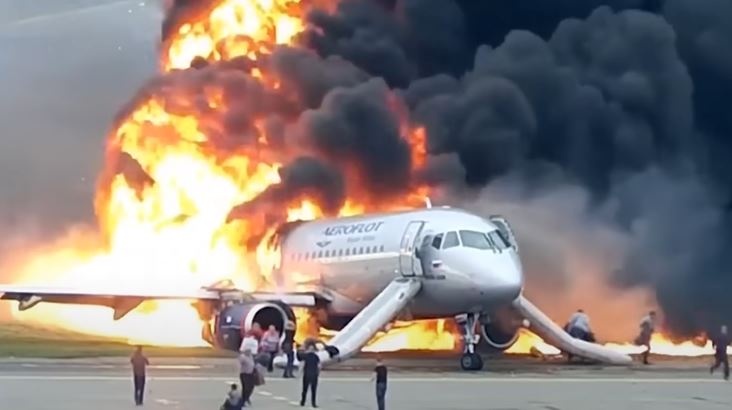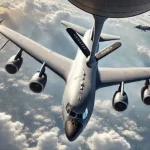Emergency landings are critical maneuvers performed by pilots when an aircraft encounters a situation that prevents it from continuing its journey safely. These landings are executed to safeguard passengers, crew, and the aircraft itself. This article delves into the reasons behind emergency landings, the procedures involved, and notable historical examples that highlight their significance.
What Is an Emergency Landing?

An emergency landing occurs when an aircraft must land unexpectedly due to an urgent situation. These landings can take place at an airport or on unprepared terrain such as fields, roads, or water, depending on the severity of the situation. Emergency landings are categorized into three main types:
- Precautionary Landing: Executed when there is a potential issue, but the aircraft is still controllable.
- Forced Landing: Occurs when the aircraft cannot remain airborne, often due to engine failure or other critical malfunctions.
- Ditching: A landing on water, typically in cases where there is no suitable land-based alternative.
Reasons for Aircraft Emergency Landings

Several factors can necessitate an emergency landing, including:
1. Mechanical Failures
- Engine Failure: One of the most common reasons, engine failure can result from fuel issues, mechanical defects, or bird strikes.
- Hydraulic System Failures: Essential for controlling flaps, landing gear, and other components, a failure here can severely affect maneuverability.
- Electrical Failures: These can impact navigation, communication, and essential cockpit instruments.
2. Bird Strikes
- Bird strikes occur when birds collide with an aircraft, often during takeoff or landing. These incidents can cause significant damage, particularly to engines or windshields, and may result in engine failure or structural issues. Modern aircraft are designed to withstand bird strikes, but severe cases can necessitate an emergency landing.
3. Medical Emergencies
- A passenger or crew member experiencing a life-threatening medical condition may require the aircraft to divert to the nearest airport for immediate medical attention.
4. Weather Conditions
- Severe turbulence, thunderstorms, or icing conditions can force pilots to land at an alternate airport to ensure safety.
5. Security Threats
- Hijackings, bomb threats, or unruly passenger behavior can prompt immediate landings to neutralize threats.
6. Fuel Emergencies
- Miscalculations, leaks, or unexpected delays can lead to fuel shortages, necessitating a landing before reserves are depleted.
7. Structural Damage
- Mid-air collisions with objects or other aircraft can compromise the structural integrity of the plane, requiring an urgent landing.
Notable Historical aircraft Emergency Landings
1. US Airways Flight 1549 (2009)

This incident, widely recognized as the “Miracle on the Hudson,” occurred when a flock of geese struck the aircraft shortly after departure from LaGuardia Airport. The resulting engine failure left the crew with no power, forcing Captain Chesley “Sully” Sullenberger to ditch the Airbus A320 in the Hudson River. His calm and decisive actions ensured the safety of all 155 people onboard.
2. Air Canada Flight 143 (1983)

Dubbed the “Gimli Glider,” this Boeing 767 ran out of fuel mid-flight due to a miscalculation in fuel loading. The pilots managed to glide the aircraft to an abandoned airstrip in Gimli, Manitoba, avoiding disaster.
3. British Airways Flight 5390 (1990)

During this flight, a cockpit window blew out at 17,000 feet, partially ejecting the captain. The co-pilot managed an emergency landing at Southampton Airport, saving the crew and passengers.
4. Ethiopian Airlines Flight 961 (1996)

Hijacked and running out of fuel, this flight crash-landed in the Indian Ocean near the Comoros Islands. While many lives were lost, 50 passengers survived thanks to the pilot’s efforts.
5. Qantas Flight 32 (2010)

An Airbus A380 suffered a catastrophic engine failure shortly after takeoff from Singapore. The flight crew safely returned to Singapore, demonstrating extraordinary skill in handling the situation.
Safety Procedures and Training
Pilots undergo rigorous training to handle emergency landings, including simulator sessions that replicate a wide range of scenarios. Aircraft are also equipped with advanced safety features such as backup systems, automated alerts, and reinforced structures to enhance survivability during emergencies.
Conclusion
Emergency landings, while rare, are a testament to the aviation industry’s commitment to safety. The combination of pilot expertise, advanced technology, and meticulous training ensures that even in dire situations, the chances of survival remain high. Historical instances of emergency landings not only highlight the challenges faced but also inspire confidence in the resilience of modern aviation.



